The Issue’s Focus: Caspian
Future Belongs To Smart Fields
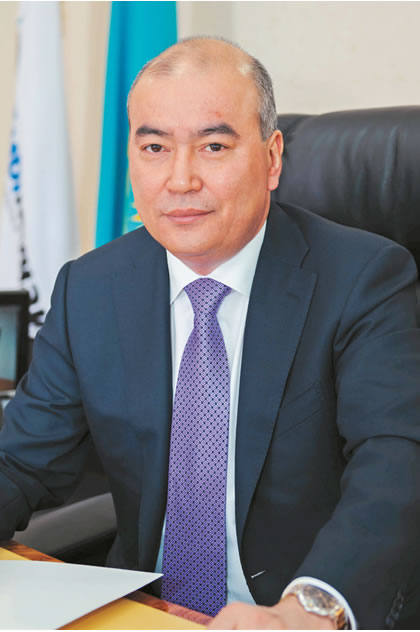
Kurmangazy Iskaziev, CEO of KMG EP, interviewed by Petroleum magazine
– KazMunayGas Exploration & Production is the main upstream asset of KazMunayGas national company. As oil prices have dropped more than 60% in just one year, how is KMG EP dealing with this new environment?
– As you know, KMG EP is one of the largest taxpayers in Kazakhstan. The company paid more than KZT 300 billion in taxes in 2015. With lower oil prices, we have had to reduce capital investments for 2016 and are working with a severely cut budget. Yet, we expect a negative cash flow in 2016. Naturally, oil prices significantly affect our bottom line, but there are also other factors. Electricity rates are rising every year, just as oil transportation costs and the fees charged by service providers and contractors.
We believe that with lower oil prices, service providers should adjust their pricing policy, so that oil producers could maintain production volumes and the corresponding amounts of services. Service providers should follow in the footsteps of oil producers, who cut their costs, and improve efficiency. In times of crisis we all need to find a balance to maintain profitability and ensure social stability in the regions.
– In the face of low oil prices, the government says it is offering subsidies to the mining sector. What do you think of the current taxation of the oil industry? Has your company received any support from the government?
– The government introduced a floating export duty rate on Brent crude oil as of March 1, 2016. It is expected that if the global macroeconomic environment with low prices for hydrocarbons remains unchanged, the introduction of a more flexible mechanism for determining export duty rates will help to keep our production businesses profitable. It should be noted that pegging the export duty rate to the Brent oil price will increase tax revenues during a period of high oil prices.
We also plan to reapply for a reduced Mineral Tax rate for Ozenmunaygas. As you know, the Government said it would lower the Mineral Tax rate for fields that have low or negative margins. Unfortunately, our last year’s request was denied. At the same time, last year KMG EP provided financial assistance in the amount of KZT 37 billion to its subsidiary Ozenmunaygas with plans to provide another KZT 45 billion this year. With its annual production of 5.6 million tons, Ozenmunaygas is unprofitable due to high production costs. We hope that this year, Ozenmunaygas will be granted a subsidized Mineral Tax rate, which will help to maintain profitability of this city-forming enterprise.
I would also like to point out that the financial performance in 2016 of our another subsidiary, KazGPZ LLP, was adversely affected by the lower LPG wholesale price. Mind though that retail prices remained unchanged. A possible solution to this issue would be to start regulating retail rather than wholesale prices, creating a mechanism for adjusting the wholesale price from the ground up.
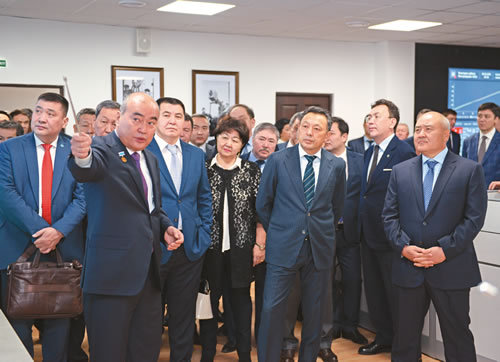
– Do you plan to review production targets for 2016 due to low oil prices?
– We follow the production plan that was adopted by the Board of Directors in December 2015. It is 12.2 million tons of oil, or 247,000 barrels per day. In the short term, an increase in production can only be achieved through effective geological and engineering solutions without increasing capital investment.
At the same time, we expect that our core assets such as Ozenmunaygas and Embamunaygas will increase production by 1% to 8.4 million tons. This is going to be hard to accomplish. We will have to optimize our production processes and improve the efficiency of oil production, conduct geological and engineering reconstruction and improve recovery of existing wells, as well as work to implement energy efficiency and uninterrupted power supply procedures. Yes, we will have to work in a challenging economic situation, but we feel confident and will do our best to optimize costs and increase efficiency in order to achieve our goals. I want to emphasize that the management have no plans to improve financial performance by cutting jobs.
– As part of its transformation, Samruk Kazyna state-owned holding is pursuing the so-called "quick wins" strategy in its subsidiaries. Emba has become a testing ground for three of these "quick wins" in KazMunayGas group of companies. Can you share some details of this experiment?
– As you know, low prices for its products force a business to cut costs. Here you have two options: option one, the easiest, is to cut jobs, while option two, requiring more efforts, is to find hidden reserves which were not paid due attention when the oil prices were at a comfortable level. As a socially-oriented business, we have chosen the second option.
The advantage of smart fields is that they help to increase oil recovery and reduce costs. Uaz, a relatively young field, was picked for the experiment. Note that the concept of smart fields is perfect for deposits with low flow rates, unstable oil inflow and significant water cut, which are all common features for Emba deposits.
The smart field technology means that real-time monitoring equipment is used at all production stages: it transmits data remotely to the control room, where an operator can quickly make a decision. At the same, all the data is sent to the Production Process Visualization Centre at Embamunaygas and the Competencies Centre of the Mining and Drilling Research Institute of KazMunayGas in Astana, where it is analyzed and used for long-term planning.
Well automation provides a number of advantages: first, significant energy savings, since the pumps only work when filled. Secondly, reduced wear & tear, which means less repair and longer operating life. Thirdly, smart fields provide comprehensive and reliable information about the well status and oilfield operations, allowing us to quickly solve problems and anticipate further work.
And finally, the fourth benefit. Smart fields will make the work for operators on the ground easier, as they will no longer have to inspect the wells in the heat and cold to check the well status, or to manually conduct diagnostics to determine the cause of a malfunction. The automated system will suggest potential issues and ways to resolve them quickly. Operators will no longer have to climb on a tank to measure the liquid level, approach oil burners too closely or manually start them. All these actions are performed automatically and remotely. So, the work of operators will be much safer.
As you can see, the benefits of smart fields speak for themselves. I would like to note that all the implementation work is done at the initiative of employees and using the internal reserves of Embamunaygas. The project manager is Bolat Nsanbayev, a young and promising Head of Production Automation and Information Technologies department.
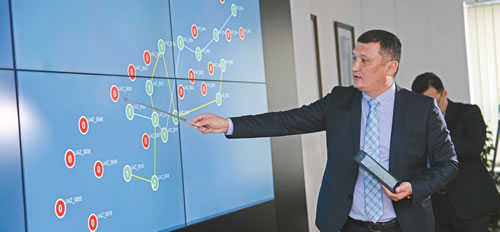
– Embamunaygas presented its cost optimization projects at a recent conference on long-term growth. They become especially relevant in the face of low oil prices, don't they?
– Yes, as part of the transformation, Embamunaygas is implementing two projects that are seamlessly connected with the introduction of smart fields: these are projects aimed at the optimization of logistics processes, as well as equipment maintenance and repair. An yes, all of them are aimed at optimizing the company's costs and improving efficiency.
Modern information technologies and systems for effective business organization, planning and inventory management have been developed and are successfully used worldwide. The importance of these processes was described by the founder of Microsoft Bill Gates who said, "How you gather, manage, and use information will determine whether you win or lose!"
At Embamunaygas, we started by analyzing the processes with the greatest potential for cost reduction. "As is" and "as it should be" simulations were developed, and by comparing them we have been able to identify and eliminate bottlenecks. Next, automation of the most important improved business processes, as well as protocols and reference information. As a result, we got rid of some tedious procedures, saving a lot of time and resources of our experts, who can now deal with more complex tasks and non-standard situations.
Furthermore, repair costs were reduced markedly thanks to the enforcement of protocols and guidelines. As a result, the actions of the staff on the ground have become predictable and aligned, the risks, including occupational injuries, have been eliminated.
We also focused on creating a nomenclature of materials and technical resources in accordance with the requirements of the nationwide nomenclatures. The problem was that for a single product we had 2-3 names, duplicated, not standardized and coded using different rules. This complicated reporting, resulted in increased inventory, including purchasing products we already had. This problem has been solved.
According to preliminary results, logistics optimization will help Embamunaygas to reduce inventory to 60% by the end of 2017. This will save the company about KZT 3 billion during the period between 2015 and 2017. We plan to introduce similar practices in other upstream businesses of KMG EP.
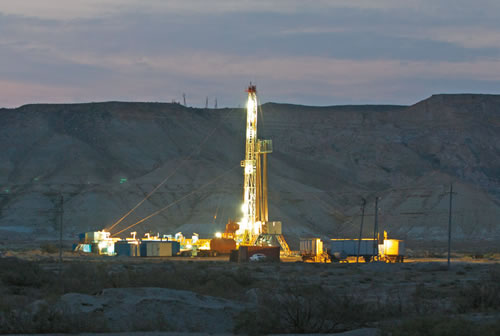
– What other fields of KMG EP are going through transformation projects?
– At Ozenmunaygas we have developed a new production optimization tool. We are preparing a pilot implementation of a specialized IT solution for production optimization analysis based on the REPOS software suite. What made us start this project is the fact that KMG had no unified information system which could support decision-making for production optimization and flooding control. As a result, decisions could be delayed or lack the supporting evidence, causing failure to achieve production capacity, negative well profitability and inefficient flooding.
At the end of 2015, the REPOS software suite was introduced at Ozenmunaygas. The staff were trained, followed by comprehensive system testing. By February 2016, three business processes have been described thanks to the project: well potential assessment, flooding analysis and hydrodynamic well surveys. Currently the system is in pilot testing using the production data from Block 3 of Uzen field, and based on the results a decision on the system's full-scale commercial deployment will be made. It is important to note that this system is one of the key components of the of the "smart field" concept.
When implemented, this project will help to improve tank performance and operational field management processes. If it is confirmed that REPOS meets the required specifications, then the selected IT system will become standard for KMG group of companies.
In addition, we will continue the use of smart fields and maintenance and repair cost optimization at Zapadnaya Prorva, S.Nurzhanov, Akshabulak Tsentralny, Uzen, Karazhanbas and Kalamkas.
– On the eve of the Independence Day of Kazakhstan, you received the State Prize as one of the authors of "Scientific Validation of the Hydrocarbon Potential of the Republic of Kazakhstan". What do you think of the growth prospects of KMG EP's resource base, bearing in mind that it takes 6-8 years to commission a field since the start of exploration?
Despite the difficult financial situation, we will continue to conduct exploration to restore and increase our raw materials base. We already have some positive results in Atyrau Region. In February, we announced the results of prospecting works on the North-East wing of S.Nurzhanov, Lyman block and Akkuduk field in Atyrau Region.
The work we are doing there will help to increase capacity and oil production of old deposits like S.Nurzhanov, Akkuduk, Yugo-Vostochny Novobogatinsk.
We are currently working with the Ministry of Energy to sign exploration contracts at five exploration blocks adjacent to deposits developed by Embamunaygas. The main focus of study on new areas will be deep sub-salt sediments at depths ranging from 5,500 m to 7,500 m. Carbonate and terrigenous sediments of the Devonian and possibly Ordovician periods will be explored.
The history of exploration and production in the Caspian area can be divided into three stages. The first one is the discovery and operation of post-salt deposits with pay zones up to 3 kilometers deep. The second stage is the discovery of large sub-salt deposits such as Tengiz (1979), Zhanazhol, Karachaganak with pay zone depths of 5 kilometers or more. The goal of the exploration at the current third stage is to study the prospects of pay zones with depth from 5 to 9 kilometers. Obviously, the risks are high, both geological and financial, due to the very poor knowledge of these depths. But we have no choice, because, as I said in the beginning, the current fields are facing depletion. To ensure oil production in the short term, the problem of multiple replenishment of oil reserves has to be solved now.
Because starting from 1990s exploration in Kazakhstan has been declining compared with the period of 1960-1980s, today we need "aggressive" exploration. This year we plan to start exploration work in Mangistau Region. We will conduct large-scale 3D-seismic surveys to explore the potential of pre-Jurassic sediments over 6 km deep in the areas adjacent to Uzen and Karamandybas fields, which have been in operation since early 1960s.
We will also continue exploration at KMG EP's assets in West-Kazakhstan Region owned jointly with MOL, our Hungarian partner. This year, we will continue exploration at Fedorovsky block to enhance industrial prospects of the existing Rozhkovskogo gas condensate field.
Our company is actively engaged in the study of geological and geophysical data from other oil and gas field projects at the stage of assessment and evaluation with a view to their acquisition based on the results of our own and independent evaluation of their industrial prospects. We will make the announcement once any concrete decisions are made.
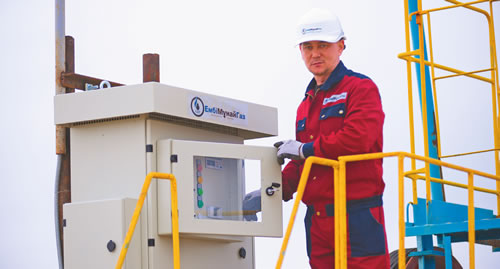
– The decline of investment in the industry had a great impact on oilfield service companies which have to shut down their operations and cut jobs. How did this affect the relationship between KMG EP and the oilfield services sector?
– Our company virtually has not changed the amount of works and services purchased compared with the previous year. Our production remains stable, we continue to purchase many oilfield services, some of them provided by KMG EP's subsidiaries. So I can't say that KMG EP's operations last year could have any adverse effect on the oilfield services sector. On the contrary, as any crisis, this one can become a good motivating factor for this industry to improve the quality of its services. Domestic oilfield services companies certainly understand that to get substantial contracts at such large projects like Tengiz, Karachaganak or Kashagan, they have to be on the same level as international companies and have competitive technology and personnel.
KMG EP has a number of oilfield service companies which have been tasked to increase efficiency and optimize costs. Not as a result of layoffs, but due to optimized use of available resources, establishing protocols, good financial management and expansion into foreign markets. Development of oilfield projects requires continuous improvement and, of course, investment. Therefore, for some of our oilfield service projects we definitely do not have plans to reduce investment – on the contrary, we will continue modernization, otherwise we won't be competitive in the future and will fail to get the desired effect.
– With the creation of the Eurasian Union, have you been working with more Russian companies as your contractors?
– At Embamunaygas, the share of foreign suppliers of goods and services, mostly Russian companies, was 1.5% in 2014. In 2015, it was 3.7%. So there is a slight growth in the number of Russian companies in our procurement structure, yet I would like to stress that in the long term domestic companies account for 90% of procurement contracts signed by KMG EP group of companies. Foreign suppliers are engaged mainly in cases where certain goods, works and services are not available on the Kazakhstani market. Since our company is part of Samruk-Kazyna sovereign-wealth fund through our parent company KMG NC, we follow the procurement guidelines of the Fund. The main factor for us in choosing a provider is the best ratio of price and quality of goods, works and services.
– Oil and gas experts predict that oil prices may not rise above 50 dollars per barrel for years. Wouldn't this kill Eurasia, the ambitious exploration project that Kazakhstan presented to foreign investors two years ago?
– Indeed, with the current oil prices Eurasia project will be more difficult to complete. A seismic survey and drilling at a depth of 15 kilometers will require huge investments. Initially, the idea was that this project will not be funded by KazMunayGas. The major potential participants of this project are large multinational companies. Now apparently they have taken a wait-and-see approach, as they understand that low prices for hydrocarbons will not last forever. Naturally, the deadlines will be reviewed.
– How did low oil prices affect the welfare of KMG EP employees? Does the company plan to cut jobs as do large international oil production and oilfield service companies?
– In the current macroeconomic environment, we do not intend to optimize costs through layoffs. Of course, if the situation becomes worse, the company will have to consider anti-crisis measures that would be acceptable and optimal for everyone. So far, we are surviving largely thanks to savings, including from successful investments made in more prosperous years, as well as thanks to smart treasury practices. At the same time, we are optimizing our production costs and working to improve efficiency through the introduction of new technologies, revision of our policies and procedures and business processes optimization. People, safety, innovation and environment are still our main priorities.
Our group of companies employs more than 26,000 people, and I am sure that working together by pooling our efforts is the only way to overcome these temporary difficulties. We continue exploration, processes optimization and implementation of transformation projects to help the company survive in this difficult time. All of us, including the government as our main shareholder, our employees and the population in the regions where we operate, want KMG EP to keep working stably, be profitable, pay taxes and provide jobs.



